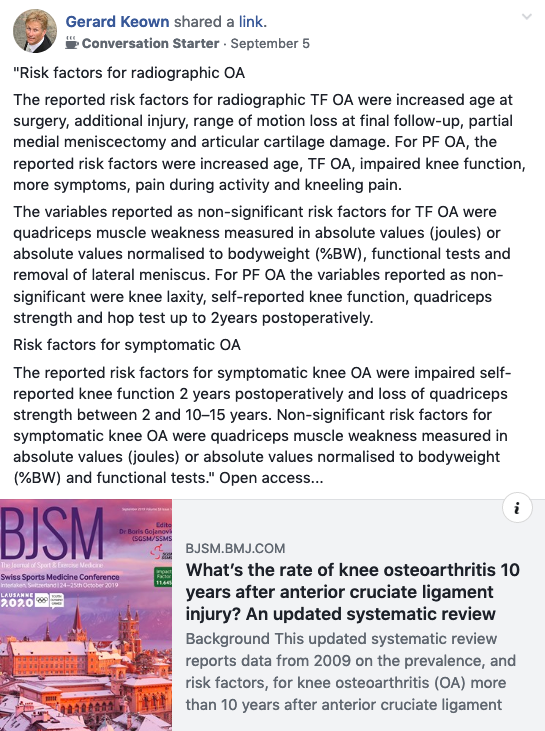What’s the rate of knee osteoarthritis 10 years after anterior cruciate ligament injury? An updated systematic review
The reported risk factors for radiographic TF OA were increased age at surgery, additional injury, range of motion loss at final follow-up, partial medial meniscectomy and articular cartilage damage. For PF OA, the reported risk factors were increased age, TF OA, impaired knee function, more symptoms, pain during activity and kneeling pain. The reported risk factors for symptomatic knee OA were impaired self-reported knee function 2 years postoperatively and loss of quadriceps strength between 2 and 10–15 years. Non-significant risk factors for symptomatic knee OA were quadriceps muscle weakness measured in absolute values (joules) or absolute values normalised to bodyweight (%BW) and functional tests.

#science #chiropractor #chiropractic #research #education #evidence based #patient centered #interprofessional #collaborative #rehabilitation #public health #spinal health #musculoskeletal health #ethics #pain #function #disability #QOL


